

| MAS ETH ARCH/CAAD - 2005/06 - STUDENT PAGES
Master of Advanced Studies in Architecture, Specialization in Computer Aided Architectural Design | 065-0005/6
Supervision: Prof. Dr. Ludger Hovestadt, Philipp Schaerer
Chair of CAAD, ETH Zurich
MAS CAAD 05/06 MODULE 01: SCRIPTING - Final Results
B. Dillenburger | C. Fuhr | F. Thessling | M. Tann | M. Zäh | M. Annen | M. Versteeg | T. Wendt | T. Kotnik | D.Y. SHIN | Y.Girot-Ifrah | S. Markovic
Assignment:
Starting point of the first Assignment are selected graphic patterns which we will analyse and define their specific composition rules. Like a recipe, you will write down step by step how the pattern is composed.
Procedure:Choose eight patterns, ornaments or structures of your environment! Select your two favorites and analyse them. Find for each five patterns, ornaments or structures who focus on one of the characteristics of the choosen favorite. Present your results on the twiki.
In a second step we will learn how to program the set of rules of your favorite pattern with the scripting language VectorScript. Variations of the pattern are easily done by integration of parameters. It is not the aim to program the pattern in detail! The pattern and its description rules should be the starting point of your transformation.
Presentation Assignment 01-2: Thursday, 08.12.2005, 14.00 o'clock, HIL E 15.1 |
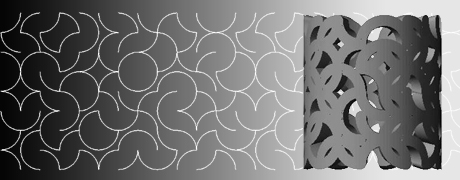 | | PermutationPattern
Toni Kotnik |
| Starting point of the investigation was the generation of a pattern of permutations based on arcs. Combining these basic elements the whole ASCII-table could be coded and used to generate a rectangular surface by reading a textfile sequentially. In order to receive a highly connected pattern, PermutationPatternPermutationPatternPermu | | that is a pattern with smooth pathes along the arcs, the translated textfile was used as input for a cellular automata with the goal to optimize the amount of smooth connections. Finally, the pattern was coiled around a cylinder and produced on a 3d-plaster-printer. |
| VectorScript/PlugIn: Download | | HierGehtsWeiterHierGehtsWeiterHierGehtsWeiterHierG..>> |
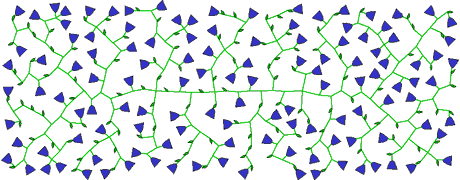 | | Horror Vacui
Benjamin Dillenburger |
| Unlike repetitive ornaments, where a certain tile repeats itself constantly, adaptive ornaments are sensitive to their enviroment. The task was to find an algorithm for a pattern depending on his surface. The ornament should fill up any polygon drawn by the user. The ornament grows in the HorrorVacuiHorrorVacuiHorrorVacuiHorrorVa | | direction of the biggest empty space left in the polygon.The resulting structure orientates itself on the sceleton of the polygon.The layout of every element follows userdefined rules (The grammar of the ornament) |
| VectorScript/PlugIn: Download | | ..>> |
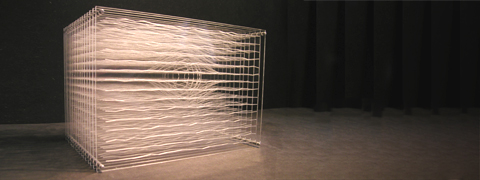 | | sand~waves
Martin Tann |
In the beginning there were images of sand and dunes. From these structures and patterns the "sand~waves tool" was developed. The idea was to create a plug-in which fills a defined area with waves. During this process, the user can set different parameters like angle and density or he turns up the interference rate which causes the waves to wobble in different ways.
sand*wavessand*wavessand*wavessand*wavess | | The most interesting possibility to influence the proceedings is to set some "disturbance objects" which have different effects on the surrounding waves, depending on size and other parameters. To make it even more attractive, the "sand~waves tool" was transfered into 3D where the user can create waves in space reacting on disturbance balls. |
| VectorScript/PlugIn: mtSandWaves | | ..>> |
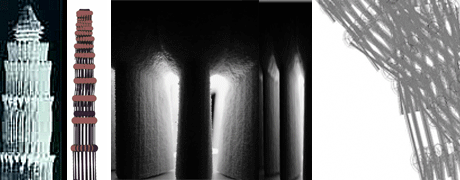 | | towerofbable
Yael Girot-Ifrah |
My project was derived from a photograph of a stem-plant and one of a fossil imprint of a plant. My work consisted of "building" the plant by defining geometric parts that would duplicate (grow) and stack upon themselves.
*towerofbabble | | The result is in 3-d and comes quite close to the original idea. I could then make a model of this plant in 3-d, as well as print a "imprint" of this plant in 2-d. The title refers to the difficulty of learning this new language of scripting...and more |
| VectorScript/PlugIn: Download | | ..>> |
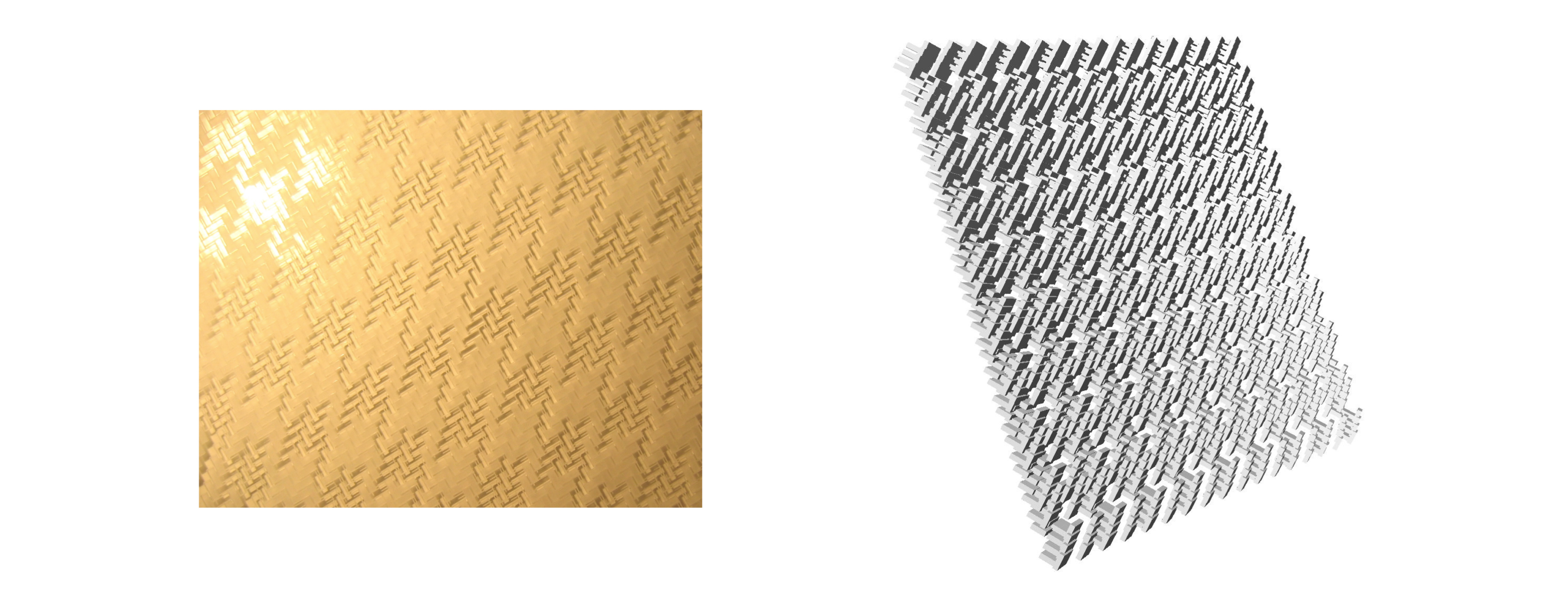 | | WeavingPattern
Claudia Fuhr |
| Thinking of textiles, we can find a wide range of different textures, patterns and weaving-techniques. A very common way for pattering textiles is to take different coloured threads. Chosen example was the fabric pattern hound`s-tooth. One of the oldest fabric patterns, known since the bronze-age. | | To find the rules and possible range of parameter settings it was necessary to study the manufacture of this twill.
The weaving-imitation was engraved on a acrylglas pane. The extruded result was optimized for rapid prototyping and produced on a 3D Printer. |
| VectorScript/PlugIn: Download | | ..>> |
 | | Mondrian' Code
Markovic Sladjana |
Pattern: Mondrians canvas: Broadway Boogie Woogie
Idea: Using Mondrian’ system of coloring and building city on canvas to make structure of scripting
Aim: User picks size of canvas, number of streets, sites, building and cars and machine creates every time different picture by input rules. | | Experiment: Different approach for Mondrian’ canvas in 3d means that Mondrian’ pattern is used for designing space (house, city) or just for relief like 3d view of Mondrian’ 2d character. |
| VectorScript/PlugIn: Download | | ..>> |
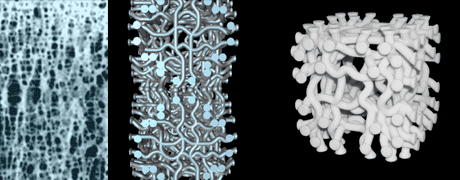 | | endlessBox
frank thesseling |
| the size of a pre-fabricated part is limited. the request to build a greater part without any repetition was my starting point of investigation. so the idea of an endless, no repetitive, 3d framework was born. i start with a 2d pattern to investigate the logic of the connections. for 3d endlessBoxendlessBoxendlessBoxendlessBoxe | | framework the connention points must be symmetric on each side. after setting the connections each point was connected by a random nurbs curve. A bone structure uses the same principle. the result was produced by a 3d plaster printer. |
| VectorScript/PlugIn: Download | | ..>> |
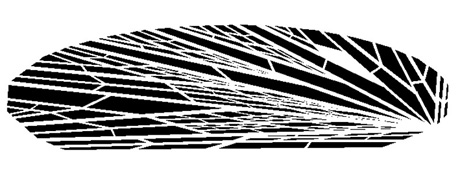 | | YourOwnWing
Matthias Zäh |
The aim was to develop a tool which allows to create your own dragonflywing-structure.
I explored two different ways to create a structure: one from inside to outside and the other from outside to inside. The first idea was to work with a growing structure described by a rekursion-loop. Then using the generated endpoints to define a new outer shape. The second was the other way round to define first the outershape and through division getting into smaller cells. The second way turned out to be easier to get the look of a wing-shape. YourOwnWingYourOwnWingYourOwnWingYourOwnW | |
The final result is based on a user-defined shape which the script divides into polygones consists of four vertexes. If the vertexes are of odd number, one extra vertex is added. All the polygones starts on the same point. Therefore it gets a direction into the structure. After that the Polygones are divided again and again until a certain dimension is reached.
|
| VectorScript/PlugIn: Download | | ..>> |
 | | Pilotis 3d
Meindert Versteeg |
In Brasilia most of the buildings where build by the Brazilian architect Oscar Niemeyer. The facades specially reflecting a pattern language in a horizontal-vertical generating an own urban language.
The process shows the Script Building Process from a first stage to a 3d mathematical language within the CAD Pilotis3dPilotis3dPilotis3dPilotis3dPilot | | program. The aim was to generate a repetitive 3d build structure out of a basic building element. The outcome is an extruded version of Pilotis that are stacked in a 3d environment. Within the structure a rule is set that subtract mass from the basic element. |
| VectorScript/PlugIn: Download | | ..>> |
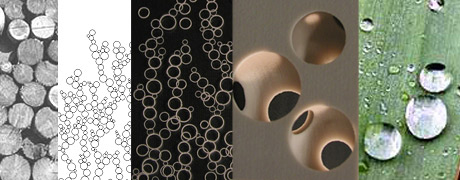 | | From Stacking to Dropping
Monika Annen |
| The reference pattern was an image showing a stack of wood. Based on this pattern a script was programmed which generated ovals piled upon each other in y-axis. In a further step the programmed pattern was applied to an 2d and 3d object. The 2d object represented the image of the generated pattern engraved on a acrylic plate. The 3d object was generated by converting the ovals into spheres which FromStackingtoDroppingFromStackingtoDropp | | again were substracted from a cuboid. Modifiable Parameters for this processes were: Number of ovals (spheres), dimension of radius, dimension of possible intersection or dimension of possible clearance between objects and z-position of spheres in the cuboid. Considering the results of this process as a new starting point, an image of waterdrops on a surface was choosen to represents it.
|
| VectorScript/PlugIn: Download | | ..>> |
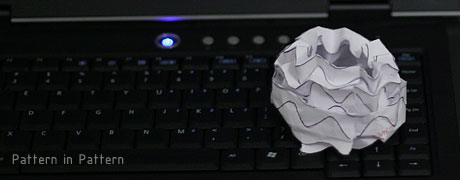 | | Pattern in Pattern
DongYoun SHIN |
| During searching patterns. I found that many three-dimensional things are consisted of two-dimensional things. Representatively, the rose has a quite three-dimensional looks but we can see the principle of two-dimensional organizing in it. PatterninPatternPatterninPatternPatternin | | So I looked for the law, expended the analysis and tried to apply it more widely. In the process of applying, without several technologies like a vectorscript, it is hard to expect final shape from only two-dimensional lines. |
| VectorScript/PlugIn: Download | | ..>> |
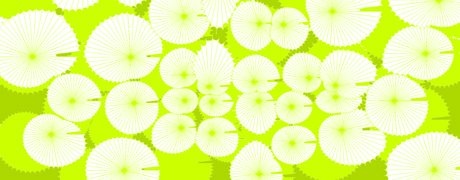 | | Floridus Flosculi
Tobias Wendt |
| The example of the grafical pattern shows a plant structure that can be found in nature. Like in natual populations the pattern is the repetition of elements all following the same basic algorithm in konstruction but can develope to an individual. In this case for every "plant" the realationship to its close neighbours couses the producing of an individual output for each, in terms of size and shape. | | In relation to the amount of space inbetween, the leaves and the bodys are attracted or rejected from each of the four close neighbours. The foundation is built up by a grid of points which function as containers for the distance data and makes it possible to change the output dynamically. |
Revision r1.25 - 17 Nov 2006 - 14:31 - NDSClaudiaFuhr
Parents: WebHome
|
Copyright © 1999-2003 by the contributing authors.
All material on this collaboration platform is the property of the contributing authors.
|
| |
|














